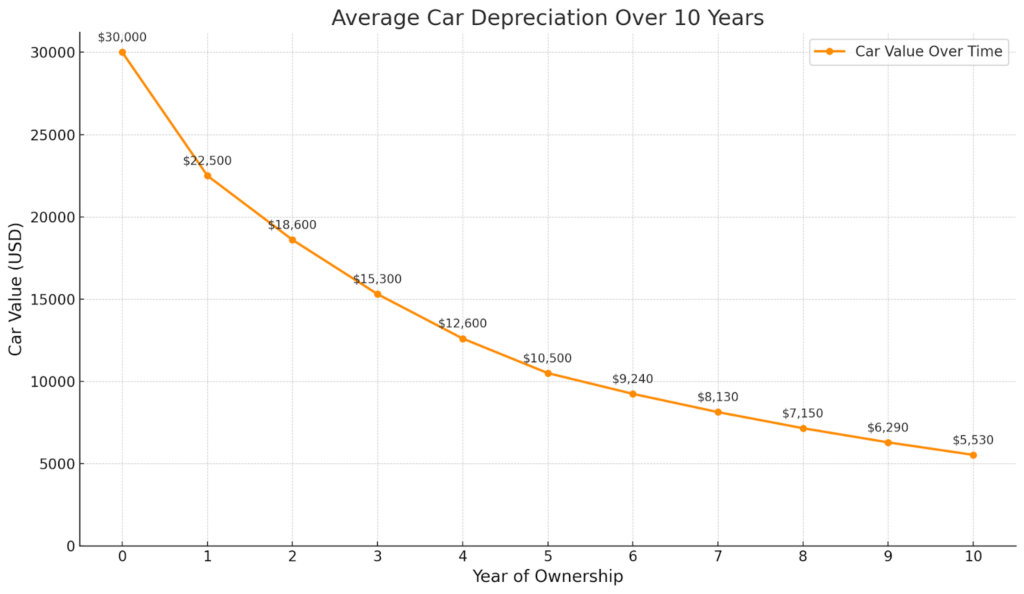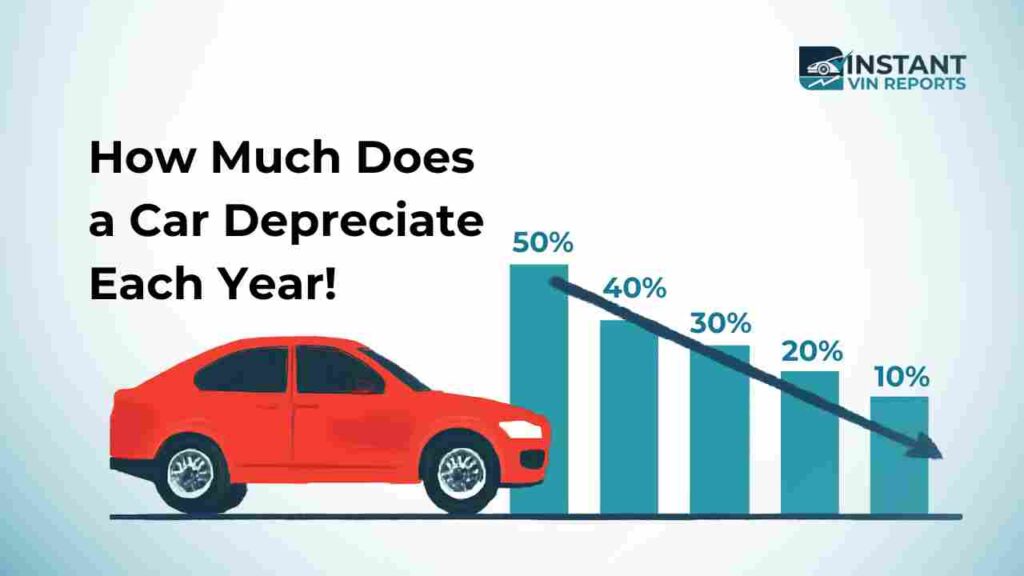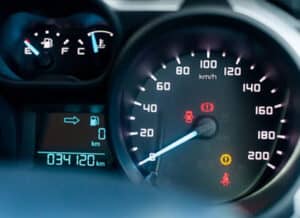For some people, buying a car is like an investment. Little did they know that it could be a liability, especially if the price depreciates significantly each year. If you are unprepared for this, car depreciation can surprise you, leading to a lower resale value when you’re ready to trade in or sell. The solution? Understand how depreciation works to keep your car’s value intact.
In this guide, we’ll explain the basics of car depreciation, what affects it, and how you can minimize its impact on your wallet.
Why Car Depreciation Matters to Buyers
If you buy a car as an investment, understand that depreciation is important to achieving a return on your investment. Depreciation is the gradual loss of a car’s value over time. It affects the car’s resale price and influences your overall cost of ownership. If you plan to sell or trade in your vehicle, knowing its depreciation rate helps you avoid financial surprises.
For instance, a car depreciating slowly may offer better resale value, lowering out-of-pocket costs. On the other hand, a vehicle that loses value quickly can be a poor financial choice, even if it seemed like a good deal initially. By learning about car depreciation rates and what factors influence them, you can make a smarter buying decision.
Average Annual Car Depreciation Rates

Car depreciation varies for every vehicle and every year. It typically follows a predictable pattern but varies depending on several factors.
Here’s what you need to know about average depreciation rates throughout a car’s lifespan.
First Year
The first year of car ownership sees the steepest depreciation. On average, a new car loses 20-30% of its value during this time. This sharp drop occurs because when you drive the car off the dealership lot, it’s no longer considered “new.” Additionally, the car’s original retail price often includes dealer fees and profit margins, which aren’t factored into the resale value.
For example, if you purchase a new car for $30,000, you can expect it to lose around $6,000 to $9,000 in value within the first year alone. Buying a slightly used car can sometimes be a wiser financial decision.
Years 2-5
Depreciation continues from the second to the fifth year, but at a slower pace. During this period, cars typically depreciate by 15-20% annually. The exact rate depends on the vehicle’s make, model, condition, and mileage. By the end of the fifth year, many cars have lost about 60% of their original value.
The good news? This is the sweet spot for many used car buyers. A five-year-old vehicle offers a significant discount off the original price while still retaining much of its reliability and useful life.
Years 6 and Beyond
After the fifth year, depreciation slows down. By this stage, most cars lose about 10-15% of their value annually. The drop isn’t as steep because the vehicle lost much of its initial retail value. Older vehicles may even stabilize their value if well-maintained, especially if they belong to a sought-after make and model.
For cars over ten years old, depreciation becomes less predictable and more dependent on the specific vehicle’s condition, mileage, and market demand. Classic or rare cars may even be appreciated.
Factors That Influence Car Depreciation
Several factors determine how much your car will depreciate each year. By understanding these elements, you can choose a vehicle that retains its value better.
Make and Model
The brand and model of a car have a significant impact on depreciation. Vehicles from reliable, well-regarded brands tend to hold their value better than those from lesser-known or less reliable manufacturers. For instance, brands like Toyota and Honda are known for their durability, making them popular for buyers seeking vehicles with solid resale value.
Luxury brands often experience quicker depreciation due to higher maintenance costs and steep initial prices, which can deter second-hand buyers.
Mileage
The number of miles on a car’s odometer significantly affects its depreciation rate. High mileage means more wear and tear, increasing the likelihood of costly repairs. Generally, the average driver puts about 12,000 to 15,000 miles on a car each year. Exceeding this average can significantly accelerate depreciation.
Condition and Maintenance
A well-maintained car holds its value better than one with visible damage or mechanical issues. Regular maintenance, such as oil changes, tire rotations, and brake checks, shows potential buyers that the vehicle has been cared for, making it more attractive in the resale market.
If you’re purchasing a used car, you should check its service history. Tools like a VIN decoder can reveal crucial information about past maintenance and repairs.
Market Demand
Market trends, such as the popularity of specific vehicle types, also affect depreciation. For example, when gas prices are high, fuel-efficient cars retain their value better. Similarly, SUVs and trucks may depreciate slower when there’s high demand for vehicles with greater cargo capacity or off-road capability.
External factors like economic downturns or shifts toward electric vehicles can also impact a car’s depreciation rate.
How to Minimize Car Depreciation
While you can’t stop depreciation, you can take steps to slow it down and get more value from your car.
Choose Reliable Models
Opt for cars from brands known for reliability and substantial resale value. Vehicles like the Toyota Camry or Honda Civic hold their value well.
Keep Mileage Low
Limit driving and consider carpooling or using public transportation for daily commutes. Lower mileage makes your vehicle more appealing to future buyers.
Regular Maintenance
Follow your car’s maintenance schedule. Regular oil changes, tire checks, and brake inspections help keep your car in excellent condition and slow down depreciation.
Avoid Unnecessary Modifications
While custom features might appeal to you, they often don’t add value to the resale market and may even lower it. Buyers prefer standard, factory-conditioned vehicles.
How Instant VIN Reports Can Help You Understand Depreciation
Knowing a car’s history and current market value is essential before buying or selling it. Instant VIN Reports provide comprehensive information that can help you gauge a vehicle’s condition and past depreciation trends.
Tools like the VIN decoder allows you to access detailed data about previous ownership, accidents, and maintenance records. This insight enables you to make informed decisions and better anticipate how much value the car might lose over time.
Conclusion
Every buyer needs to consider car depreciation. Understanding how much a car depreciates yearly and what factors influence this process can save you money in the long run. By choosing the correct make and model, maintaining low mileage, and keeping up with regular maintenance, you can minimize the impact of depreciation.
With resources like Instant VIN Reports, you can better understand a vehicle’s history and market value before purchasing it.
Frequently Asked Questions
How much value does a car lose in the first year?
On average, initial depreciation causes a new car to lose 20-30% of its value in the first year.
Which cars hold their value the best?
Reliable models from brands like Toyota, Honda, and Subaru tend to retain their value better, thanks to their reputation for durability and low maintenance costs.
Is depreciation the same for new and used cars?
No, new cars experience the highest depreciation in the first few years, while used cars typically see slower depreciation rates, especially after the five-year mark.










